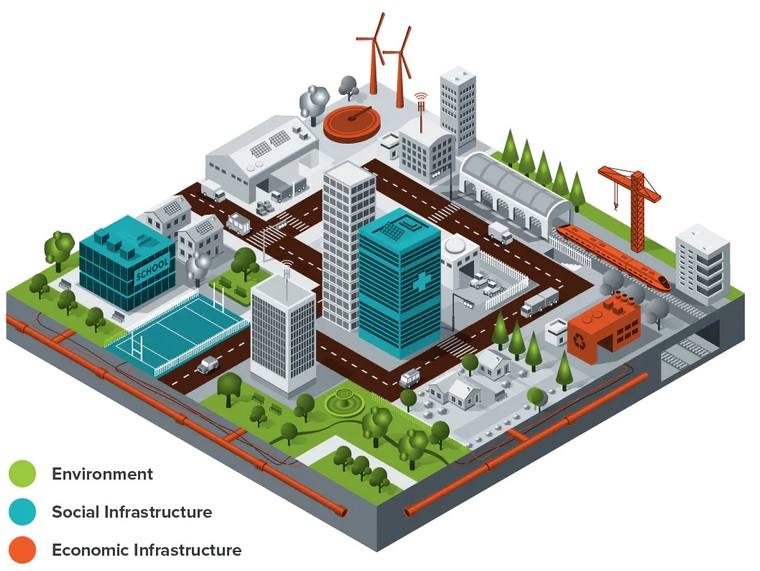
As a frequent traveller between Ōtaki and Wellington, life has been changed immeasurably by the new roads – Peka Peka to Ōtaki, Kāpiti Expressway and Transmission Gully.
On a clear run the journey is reduced by around 10 to 15 minutes. Better still, the congestion points are eliminated so that a north-bound three-hour Friday evening journey is now a breeze.
Infrastructure such as this costs considerable amounts of public dosh, but the price we pay, where infrastructure is inadequate, is chronic and colossal.
For example, every day that we’ve endured disrupted journeys has caused economic loss to the community and financial cost to citizens. That’s not counting the tragedy of lives lost in stranded ambulances or the sheer frustration of sitting in snarled traffic.
That’s like a whole community riding a bike with a rusty chain, every day. Oil the chain and every day, thereafter, is faster and better.
At this point, let me hasten to say I am not advocating for more highways just for the sake of it. While most people still drive gas-guzzlers that are helping to fry the planet, and our highways cut a swathe through cities and small towns, good infrastructure is nevertheless essential to our quality of life.
Planning and investment in good infrastructure serves the needs of everyone and can have an enduring impact long after the initial investment. And, because of its immense cost, it naturally attracts the input (intellectual and money) of the wider community.
An example from our own early history is the development of infrastructure following the advent of refrigerated shipping in 1882. Before that, dirt tracks between farms and villages sufficed, given that perishable goods needed to be consumed within donkey-cart distances.
The ability to get goods to the other side of the world presented a huge opportunity, but required strategies and investment, for example, to connect farms with processing and port facilities. The resulting infrastructure not only transformed the economy and well-being of farmers, but also it enabled communities in every sphere of life.


Along the way though, I’m not sure we’ve learned all the lessons from history, because infrastructure is not necessarily physical. Think of it as all the ways that people connect with each other in communities (cultural infrastructure), which has been around since Adam and Eve. It’s just as important as physical infrastructure, so why shouldn’t it be just as important in our thinking and planning?
The recent Hawke’s Bay floods badly affected communities and marae in Heretaunga. Expensive physical infrastructure failed, for example, because early-warning river gauges needed telco connections which were taken out by power outages. But in terms of warnings and resilience, it was the marae and the connections people had that made a real difference.[1] That’s an important consideration in this country, given our vulnerability to natural disasters.
Taking the refrigerated shipping story and fast forwarding 140 years, we see the infrastructure tool of the current age (online and digital) is not handled in the same way as roads and bridges. The economics of digital infrastructure is cheap in comparison, so there is less motivation to look at it from a collective or community perspective. The result of this ambivalence is enabling (for many individuals) but also disabling, fragmented and chaotic.
The New Zealand Infrastructure Commission – Te Waihanga, has a sound strategy to transform New Zealand’s infrastructure over the next 30 years. Rightly, they acknowledge the intergenerational benefits of good infrastructure planning and investment, and acknowledge the need to better connect the various silos of activity.

Source: Te Waihanga, data from Schooling, Burgess, & Enzer (2020).
Usefully, under the headings of environmental, social, and economic infrastructure, the commission gives infrastructure a description:
Delivering the services we depend on like power, water, transport, healthcare and education. It allows us to share resources so that we can be more connected, healthier, smarter and innovative.
In my view, infrastructure itself is in a silo, based on the assumption that its generally about “physical” and expensive things.
For that reason, I would add “cultural infrastructure” under its own heading. It might be ignored as too obvious, but it has all the benefits of physical infrastructure, with the advantages of being cheaper, more adaptable and, in many cases, utilises available capabilities and entities (e.g. towns, marae, institutions, people networks and digital connectivity).
OTHER STORIES
 You can contact Fraser here.
You can contact Fraser here.
Fraser Carson is the founding partner of Wellington-based Flightdec.com. Flightdec’s kaupapa is to challenge the status quo of the internet to give access to more reliable and valuable citizen generated content, and to improve connectivity and collaboration.
Flightdec websites include: KnowThis.nz, Issues.co.nz and Inhub.org.nz.
OTHER POSTS

